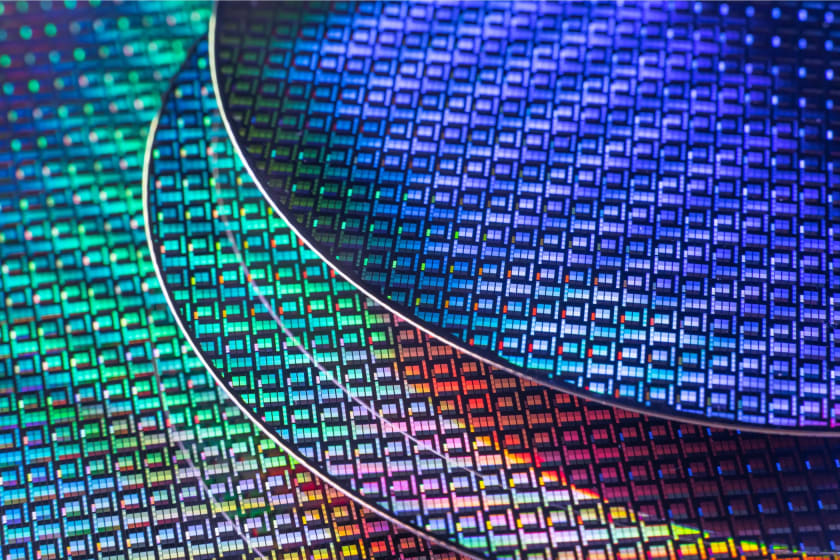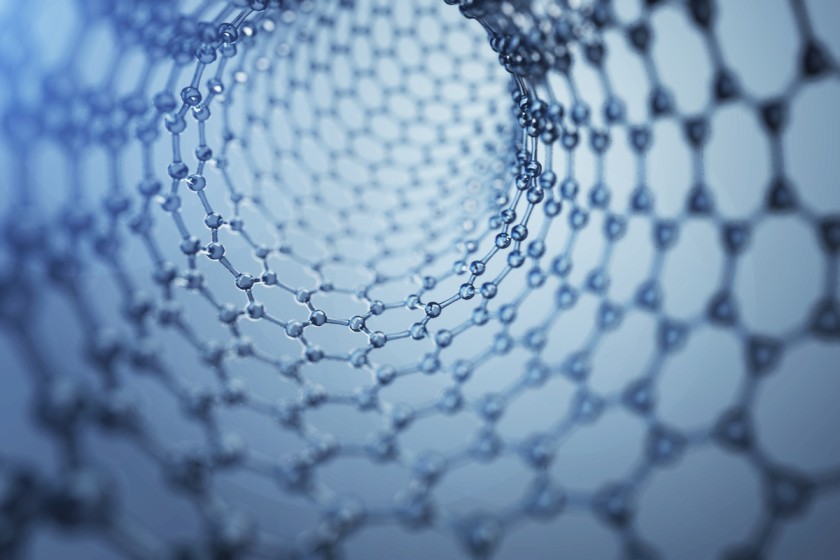Nanotechnology In The Textile Industry



Nanotechnology is the science of manipulating, understanding, controlling, and determining the biophysical or chemical aspects and factors of material between the length of 1 nm and 100 nm. It aims at improving the quality and structure of a material by altering, synthesising, and engineering it. A 2014 report by Transparency Market Research estimated that the global revenue and market for technical textiles would grow at a compounded annual growth rate of 3 percent between 2014 and 2018.
Nanotechnology is a new approach to the textile and apparel industry. Its application has been offering a wide range of opportunities and attracting groups of businessmen, investors, and others because of the potential and growth it offers economically.
Nanotechnology has thus brought a technological revolution in the textile industry. This article aims to portray the current scenario of the textile industry and the emergence of nanotechnology as a solution.
Nanotechnology and fibres
We live in a society in a constant state of revolution or change. The consumers of the textile industry have always demanded new technology and innovations for a better experience. This demand has led to the involvement of science, not just in the manufacturing of these fabrics but also in other aspects. The science of nanotechnology is actively getting applied in the textile or fibre-producing industry.
Nanotechnology, together with fibres, has resulted in nanofibers or smart fibres. These smart fabrics are advanced and multi-functional in fashion, sports, protection, transportation, etc. Nanotechnology has not completely dominated the market, but the idea is now widely accepted. It is predicted that soon the market will focus on nanofibers on a wider scale.
Examples of nanofibers in different fields of the textile industry

The examples of nanotechnology in different fields of textile are as follows:
Swimsuits designed with nanotechnology
A swimsuit designed with the help of nanotechnology is very different from ordinary swimsuits. These swimsuits have a layer of plasma directed and enhanced by nanotechnology. This plasma layer helps in repelling the water molecules, resulting in better diving and swimming.
Self-cleaning bed sheets
Another very important example of nanotechnology is the development of self-cleaning bedsheets. As the name suggests, the fabrics of such bedsheets do not let dirt or water stay on their surface for a longer time. Such fabrics are also referred to as nano-care fabrics. These fabrics work by dismissing all contact points of external elements, such as dust, dirt, etc.
Ultraviolet ray-protective jackets
Most fabrics aim to protect the person wearing them from the harmful elements of the environment, for instance, the ultraviolet rays of the sun. Nanotechnology enhances this ability of fabrics by adding delustrant, ultraviolet ray absorber, and dye pigmentation. Such technology deflects the sun's harmful rays and makes the fabric comparatively better than others since it provides better protection.
Properties of nanofibers
The special properties of nanofibers are as follows:
Water-repellent properties of nanofibers
Fibres made up of nanotechnology or nanofibers are mostly water-repellent. The fabric is made hydrophobic or non-wettable by adding a layer of wax to it. This addition of the layer of wax generates a peach fuzz effect, which further decreases the possibility of water absorption. Such fibres are mostly used by swimmers, water navy, or scuba divers to reduce their contact with water. Thus, being water-repellent is one of the properties of nanofibers or smart fibres.
Antibacterial properties of nanofibers
Another property of nanofibers is their antibacterial nature. The nanofibers are coated with nano-silver. This nano-silver coating further reacts with the germs or bacteria present in the environment or the ones coming in contact with the fabrics and slows down the growth of their cells. It puts an end to the multiplication or growth of bacteria and thus prevents bad odour or infection. Such fibres are mostly used to manufacture socks, gloves, etc.
Wrinkle-Resistant properties of nanofibers
Making the fabrics wrinkle-free or wrinkle-resistant is another property of nanofibers. The conventional form of clothing has wrinkles after a single use, but nanofibers are free from wrinkles after numerous uses. The hydrogen bonds formed in the fabrics are responsible for keeping the fibres firm and free from crease.
Ultraviolet Ray-protective properties of nanofibers:
Ultraviolet rays are very harmful to the skin. High amounts of SPF can provide short-term protection, but it is advised that one must go for clothes that protect from the sun and its harmful rays for long-lasting protection. Nanofibers protect from these rays through minute chemicals such as zinc oxide, titanium oxide, and others for scattering and deflection of UV rays. Thus, another property of nanofibres is protection from ultraviolet rays.
Fireproof properties of nanofibers
The fibres manufactured from nanotechnology are made fireproof or flame resistant. This is because nanofibers are infused with zinc oxide, which decreases inflammability. Such fibres are used by fire station workers to easily work in extinguishing the fire. Thus, it is another property of the advanced fabrics made from nanotechnology.
Anti-pollen properties of nanofibers
The pollen grain nanofibers are designed so that they do not allow pollen grains to be stuck in the fabrics. Pollen from flowers gets attached to the fibres of different clothes, which leads to a thick white layer on the clothing, which is difficult to remove. Nanofibers are an important property of the smart fabrics made by nanotechnology.
These are some of the important properties of nanofibers. These properties make it technically advanced, and its facilities increase the demand for such technology in the market.
Different types of nanotextile or nanofibers

The different types of nanotextile or nanofibers are as follows:
● Nano-finished textiles
● Nanocomposite textiles
● Nanofibrous textiles
● Nano-enabled nonwovens
● Clay nanoparticles
● Carbon nanotubes
These fibres are going through constant change to bring out the best in the market that will benefit the people and suit the environment.
Advantages of nanofibers
There are various advantages of Nanofibers. Some of them are as follows:
Durable fabrics
The fabrics produced by nanotechnology are very durable and have high tensile strength. These fabrics last long and are not worn out by frequent washes or rough use. The high tensile strength of the fabrics makes them strong for everyday use. This feature of nanofabric makes it different from the existing fabrics available on the market.
Comfortable
Nanofibers are best suited for everyday use, as they are pretty comfortable for the body. The fabrics are made keeping in mind people's comfort in wearing them. Generally, the clothes we see today are either not that comfortable as far as the fabric is concerned or sometimes irritate sensitive skin. The clothing made of nanofibers is purposely made comfortable to stand out in the market.
Cost-effective
The production of nanofabrics is cost-effective, and its mass production of such textiles is profitable for both the producers and consumers. It is because of the high potential of economic advantage in the nanofibers industry that investors and businessmen from all over the globe are taking initiatives to invest in this sector.
Multiple facilities
Nanofibers provide multiple facilities, such as fireproof property, antibacterial property, water-repellent nature, wrinkle-resistant property, etc., which makes such a technology in the field of textiles popular. Nanofibers are growing in different sectors, such as defence, medicine, and others because of their multiple facilities and uses.
Some Companies associated with the production of nanofabrics are:
Many companies are associated with the manufacturing and use of nanofibers and nanofabrics. The below mentioned are some of the well-known companies across the globe that deal with the production of Nano fabrics:
Nano textile
Nano textile is a well-known company in Israel that deals with the production and processing of nano-based textile.
GoGoNano
GoGoNano deals with the manufacturing of sprays that provide nano-coating. They also manufacture water-repellent clothes, shoes, etc.
Nano-Tex
Headquartered at Bloomfield hills, Nano-Tex is a company that manufactures nanofibres or nanotechnology-based textiles.
Conclusion
As far as the science of nanotechnology is concerned, the textile industry is introducing more aspects of its development that are aimed at benefiting consumers as well as producers. The demands made by consumers in terms of quality and facilities are being covered by the introduction of such facilities. Nanotechnology is, thus, the answer to the problems which are faced by today's world in the case of textile and fabrics.
Fashinza is a B2B apparel manufacturing platform. We help clothing brands manufacture their awesome collections by connecting them with suppliers. Our chief offering is our platform, using which brands can place an order, track it, receive daily production updates, communicate with manufacturers, and make payments.
We make the apparel manufacturing process hassle-free, fast, and transparent for the brands. If you are a fashion brand or a manufacturer looking for clients, contact us today!



















